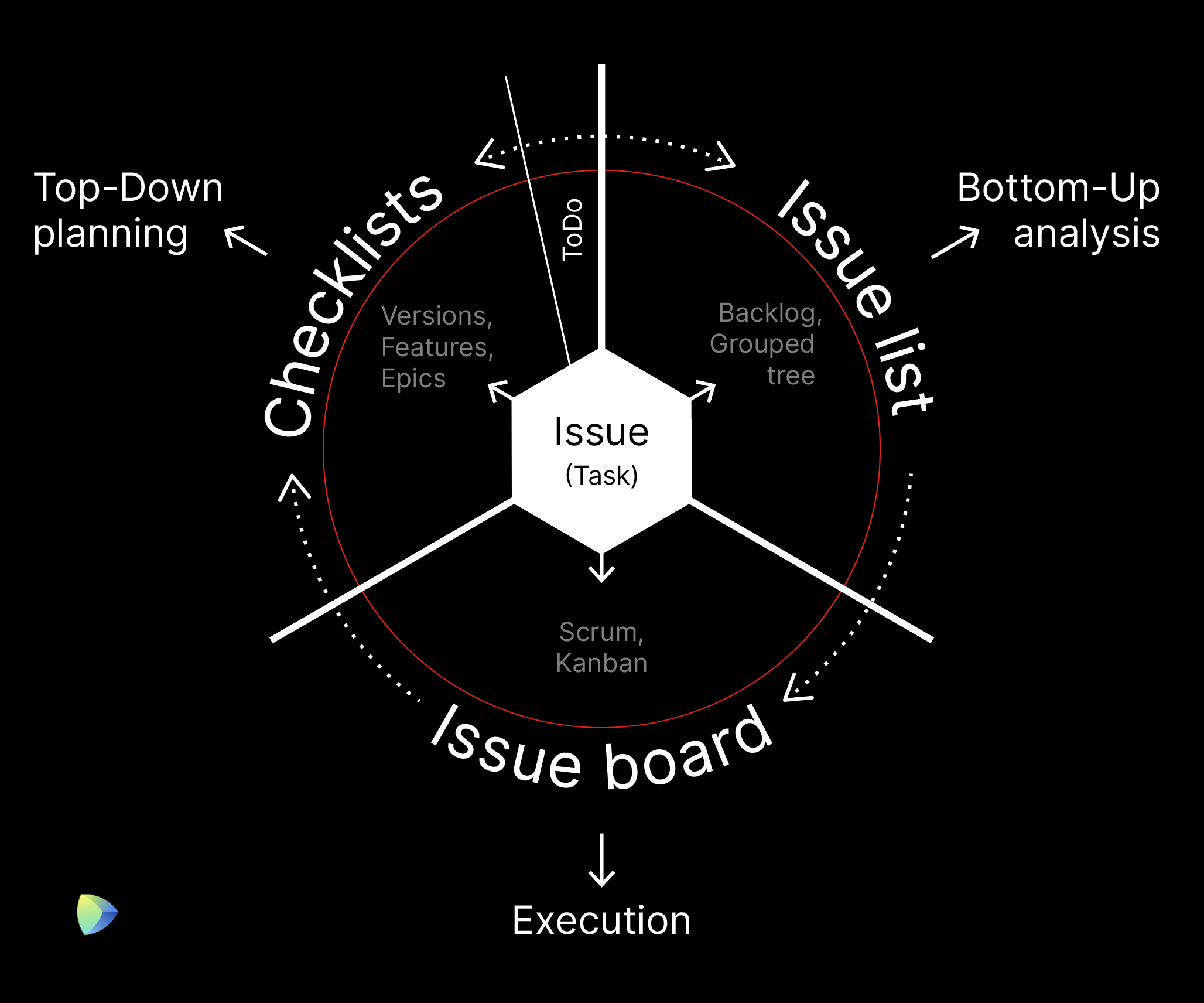Space
The intelligent code collaboration platform
Space and SpaceCode will be discontinued on June 1, 2025. Learn more → →
The Concept of Project Management in Space
With Space, we intend to create an integrated team environment. Using multiple tools makes it difficult to keep track of everything about your projects, teams, and people. Instead of scattering our work and communication across tools, Space endeavors to centralize it all in one place.
Space combines the tools for software development, collaboration, planning, analysis, and project management. It also contains documents, knowledge base, and company structure – all in one interface, powerful for technical people, and friendly for everyone to use. Programmers, designers, QA, PMMs, HRs, and managers feel equally at home and work together seamlessly on projects. This is the idea behind Space and the destination we’re headed for.
Today, we want to introduce you to our concept of project management. This is the plan, the ideas we have behind the project management process, and a lot of work is still in progress. However, we are eager to hear your thoughts on it to be sure we’re building on the right idea.
The Concept of Project Management in Space
The whole project management process can be divided into three main stages: Planning, Analysis, and Execution. Combining these stages, we aim to support a wide array of flows.
Sometimes you start from scratch with the planning phase, moving smoothly to the analysis and execution stages. Other times, you want to go back to planning from the execution stage, for example when features require more input from stakeholders or additional analysis is needed.

I. Planning
Project managers often use hierarchical lists in a simple doc/notes form, in order to summarize discussion results, create mind maps, decompose a project scope, and structure ideas into a plan. We’ve decided to reuse this approach.
Long-term planning with checklists:
- Starting with a top-down planning process, you create structured checklists with epics on the top level, and then further decompose them into features and smaller to-do items in a simple text form.
- Using the hierarchical checklists, you can plan an epic or a feature, or a version/release. You can play with the level of detail – the hierarchy of the checklist is limited by your imagination and the level of abstraction.
- You can collect and decompose your ideas in your personal checklist and then move it to a project, or you can create a shared checklist and work collectively to decompose it.
Short-term planning with personal to-dos:
- Personal to-do lists are intended to be used for short-term personal planning, like sticky notes on your laptop screen, or notes in any other form. When you take any checklist item, it’s automatically converted to an issue, assigned to you, and added to your personal to-do list.
- You can convert any entity to a to-do item, such as reading a blog post, doing code review, replying to a chat message, and so on. This way, you can finally get rid of stickers and notes all around your working place. (Please tell me I’m not the only one waiting for a chance to do this!)
II. Analysis & Tracking Progress
- When the checklist is ready, you can go through each item in the list and convert those that require teamwork into issues in one click. (You may ask, “Why not create issues from each checklist item, right away?”. We think that it’s optional; sometimes you may need to plan a meeting, make a decision, or ping someone. It may be an important part of the puzzle, but you may not want to create a “heavy” issue with a state, assignee, etc.)
- All these issues are then combined in a single issue list view, which can be observed as a backlog or a grouped tree.
- A multi-view Issue list with search, filters, and analytics capabilities gives you the power to do multi-level analysis and track the progress.
III. Execution
- After you prepare your backlog for the next iteration using the issue list’s capabilities, you move to the next execution phase.
- For the execution phase, we suggest visualizing your backlog using an issue board.
- The board gives the best overview of the current progress and helps the whole team stay on track.
We believe that the suggested form can be reverted at any stage and should work both ways. It’s a simple yet powerful concept making all project data accessible, transparent, and visible to the project team and the rest of the company.
This is the concept of project management we’re implementing in Space. We’ve already introduced the first implementation of checklists and issues, the integration between these two is coming soon. You’re welcome to start using issues and checklists, keeping in mind the future evolution.
What do you think about the concept of project management in Space? Does it fit your current process? Please share your thoughts, we’re waiting for your feedback!
- Post your comments here
- Post an issue to our issue tracker.
Haven’t tried Space yet? Request your invite and join a free Space early preview program today!
Your Space Team
Subscribe to Space Blog updates







